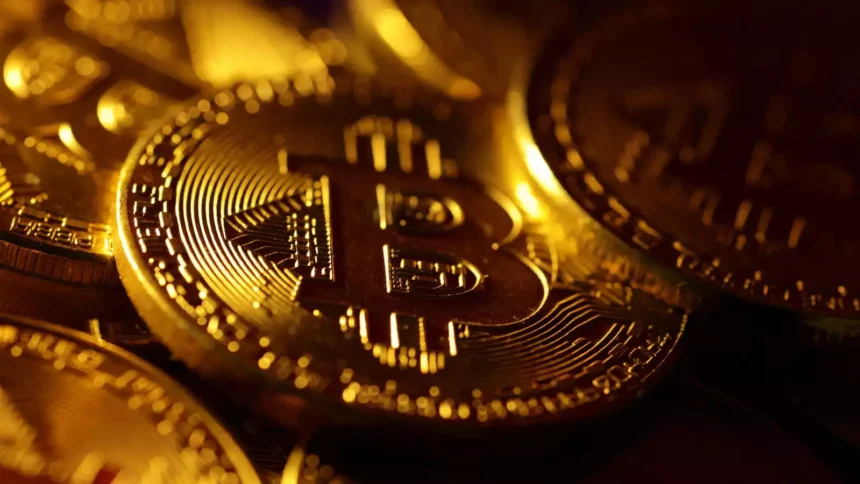In recent years, the volatility of btc price has attracted the attention of global investors. As it breaks through historical highs again, many people cannot help but ask, what are the reasons behind this price surge? Besides the increase in market demand, what other hidden drivers are driving the value of Bitcoin to climb? This article will explore from multiple perspectives that the price increase of Bitcoin is not only the result of market speculation and speculative behavior, but also influenced by various factors such as policy changes, institutional investment, and the global economic environment.
In recent years, more and more institutional investors have begun to pay attention to and participate in the Bitcoin market, which cannot be underestimated in terms of its driving force on Bitcoin prices. The addition of traditional financial institutions, hedge funds, large enterprises, and even national level investment institutions marks that Bitcoin has gradually moved from a niche investment product to the mainstream market.
For example, MicroStrategy、 Tesla and other well-known companies have taken the lead in purchasing Bitcoin on a large scale, and other institutions and enterprises have followed suit. Institutional investors typically possess significant capital strength, which greatly enhances the liquidity of the Bitcoin market and further drives its price up. In addition, the entry of institutional investors not only increases the demand for Bitcoin, but also enhances the market’s recognition of Bitcoin and strengthens its position as “digital gold”.
With the outbreak of the COVID-19, governments of all countries have adopted large-scale monetary easing policies to increase market liquidity through interest rate cuts, quantitative easing and other means to cope with the risk of economic recession. However, these monetary policies have also brought serious inflation expectations, especially in the context of the depreciation of mainstream fiat currencies such as the US dollar and the euro, and investors have begun to seek assets that preserve and increase their value.
Bitcoin, as a decentralized digital currency, has a fixed supply of 21 million coins, making it an effective tool for combating currency depreciation. Especially after the successive introduction of the US economic stimulus plan and the European Central Bank’s monetary easing policy, the demand for Bitcoin as a “safe haven asset” has sharply increased, driving its price further up.
The Bitcoin market itself is highly volatile, and this volatility often triggers speculative behavior among investors. Many investors see the potential for substantial returns in the short term when the price of Bitcoin rises, and this psychologically driven investment behavior often contributes to price surges.
Especially when the price of Bitcoin breaks through key technical levels (such as psychological levels like $20000 or $40000), the collective sentiment in the market often exhibits a clustering effect, leading to more retail investors and short-term speculators joining the market and pushing up the price of Bitcoin. In this situation, market sentiment becomes particularly important, as optimistic expectations and optimism about future prices often drive Bitcoin prices to continue rising.
With the development of blockchain technology, Bitcoin not only exists as a digital currency, but its technological value and application scenarios have also received increasing attention. As a pioneer in blockchain technology, Bitcoin has the characteristics of decentralization, security and transparency, and low cost, which continuously expand its application scenarios worldwide.
Especially with the rise of emerging applications such as decentralized finance (DeFi) and NFTs (non fungible tokens), the usage scenarios of Bitcoin have become more diverse. These technological innovations have not only increased the market awareness of Bitcoin, but also boosted investors’ confidence in its long-term development, thus having a positive impact on Bitcoin prices.
In recent years, the legal status and regulatory environment of Bitcoin have gradually become clear, which has played a crucial role in the stability and rise of Bitcoin prices. With the gradual relaxation or introduction of relevant policies by governments and financial regulatory agencies on Bitcoin and other cryptocurrencies, the legitimacy and transparency of the market have been enhanced.
For example, the US Securities and Exchange Commission (SEC) has gradually shifted towards a more inclusive attitude towards Bitcoin, and regulatory agencies in multiple countries have also begun to recognize Bitcoin as a legitimate asset for trading. At the same time, some countries such as El Salvador have officially listed Bitcoin as a legal tender, which undoubtedly brings more trust and participants to the Bitcoin market, further driving its price up.
The breakthrough of Bitcoin price to a new high is inseparable from the joint action of multiple factors. From the influx of institutional investors, to the impact of global monetary easing policies, to changes in market sentiment, technological innovation, and legal regulatory environment, these invisible drivers have collectively driven the prosperity of the Bitcoin market. However, investors should be aware that there is still significant volatility in the Bitcoin market, and future price trends are still full of uncertainty. Therefore, when investing in Bitcoin, it is important to recognize both its potential and the risks involved.


